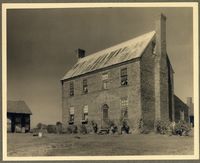When the New York Times writes about the near-demise and miraculous return from tax-evasion death of a Cambridge, MA ice-cream maker, you know there’s something special going on. And, in fact, there is.
To my astonishment, in the nearly seven years of this blog I’ve only written about Toscanini’s once, in conjunction with last year’s Ig Nobel awards. But my roots with Toscanini’s go back right to 2000, to almost the day I first set foot on MIT’s campus, where at the time there was a Tosci’s under the entry stairs at the west campus student center, one in Central Square, and one in the same block just south of Harvard Square as the stationery store. They had basil ice cream. Basil ice cream. Like the pure essence of Italian summer, like back yard gardens, like pure golden-green herbal explosions in your mouth. I was instantly hooked.
I only tasted basil ice cream twice, but there were other flavors. Green tea. Guinness, of course. And khulfee and burnt caramel and all the other spectacular flavors that they had. Completely unlike every other ice cream that there ever was.
With the Atlantic opening up their paywall, you get a little better sense of how good it really was. Ice Cream for Beginners – 00.06 describes the origins of burnt caramel, and a little of the creative atmosphere of the place. As well as how he might have gotten into the tax problems in the first place: the bit about Adam Simha wandering into the kitchen to filch ingredients probably raised no eyebrows in the happy-go-lucky creative late 90s but makes me wonder now how many other employees thought of Tosci’s as their own version of Andy Warhol’s Factory, or their Stop’n’Shop.
But all of this pales at the thought that I might be able to taste basil ice cream again. Perhaps I ought to drop Gus Rancatore a line. Right now, he might be susceptible to special requests.

